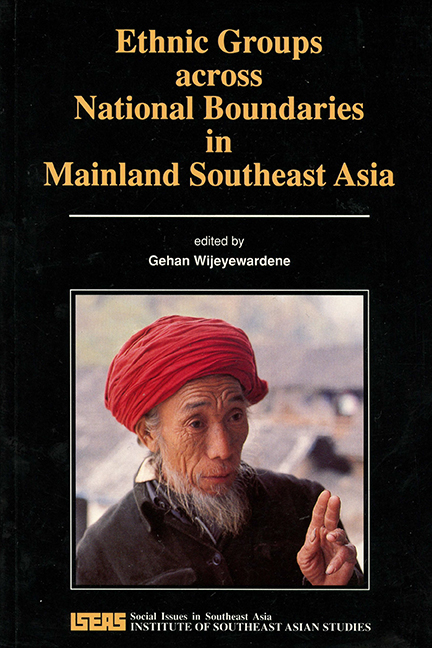Book contents
- Frontmatter
- Contents
- Foreword
- Contributors
- Acknowledgements
- 1 Introduction: Definition, Innovation, and History
- 2 Language and Ethnicity: The Mon in Burma and Thailand
- 3 Thailand and the Tai: Versions of Ethnic Identity
- 4 A Comparative Study of Structure and Contradiction in the Austro-Asiatic System of the Thai-Yunnan Periphery
- 5 Ethnicity, Nationalism, and the Nation-State: The Karen in Burma and Thailand
- 6 Capitalism and the Structure of Yao Descent Units in China and Thailand: A Comparison of Youling (1938) and Pulangka (1968)
- 7 Squatters or Refugees: Development and the Hmong
- 8 Afterword: “Ethnicity” and Anthropology
- Index
- THE EDITOR
1 - Introduction: Definition, Innovation, and History
Published online by Cambridge University Press: 21 October 2015
- Frontmatter
- Contents
- Foreword
- Contributors
- Acknowledgements
- 1 Introduction: Definition, Innovation, and History
- 2 Language and Ethnicity: The Mon in Burma and Thailand
- 3 Thailand and the Tai: Versions of Ethnic Identity
- 4 A Comparative Study of Structure and Contradiction in the Austro-Asiatic System of the Thai-Yunnan Periphery
- 5 Ethnicity, Nationalism, and the Nation-State: The Karen in Burma and Thailand
- 6 Capitalism and the Structure of Yao Descent Units in China and Thailand: A Comparison of Youling (1938) and Pulangka (1968)
- 7 Squatters or Refugees: Development and the Hmong
- 8 Afterword: “Ethnicity” and Anthropology
- Index
- THE EDITOR
Summary
In the account of his travels through Southeast Asia during the second quarter of the seventeenth century, the Augustinian Father Sebastien Manrique describes
… a great festival and solemn occasion which is celebrated every year at the new moon in December. Many heathen nations keep this festival, as for instance the Chinese, Japanese, people of Tonquin, Cochin China, and Champa, the Siones, Siammes, the inhabitants of Calaminan, Jangomas, Capimper, Brama, Ava, Pegu, the Maghs and many others. This diabolical feast has various names according to the different languages and races, but the meaning is the same in each case. The people of Burma and the Maghs, of whom I am treating, call the feast Sansaporau, which means in our language “Feast in commemoration of the dead”.
(Hakluyt Society 1927, p.234)Eckford Luard, Manrique's translator and editor, writing in 1927 says,
This word appears to mean the “full moon” feast … Mendez Pinto's description of the procession he saw in the Kingdom of Calaminham at the Tinagoogoo shrine is very similar… There can be little doubt that Manrique, having lost his notes, or to improve the occasion, is here copying this account of Pinto's. (Ibid., pp. 245–6)
He ends this note with an identification of the peoples mentioned as practitioners of this particular ritual:
… the Bramas are the Burmese, that is the people of Ava or Upper Burma, the Pegus those of lower Burma, and the Maghs of Arakan. The Champas come from Champa, then a considerable state, though now only a part of the Binh-Thaur province of Cochin-China… the Siones and Siamese are here distinguished, the former no doubt meaning the Shans as distinct from the Siamese. Calamingham was apparently [?] a State lying to the north of Siam and east of Burma. The Gangomas [though in the text spelt with an initial “j”] are the Laos, a race in Siam living around Chieng-mai, which is situated 150 miles east of Toungoo in Burma. (Ibid., p. 246)
Fray Manrique's account, whether pirated or not, is a suitable text to introduce this volume.
- Type
- Chapter
- Information
- Publisher: ISEAS–Yusof Ishak InstitutePrint publication year: 1990

